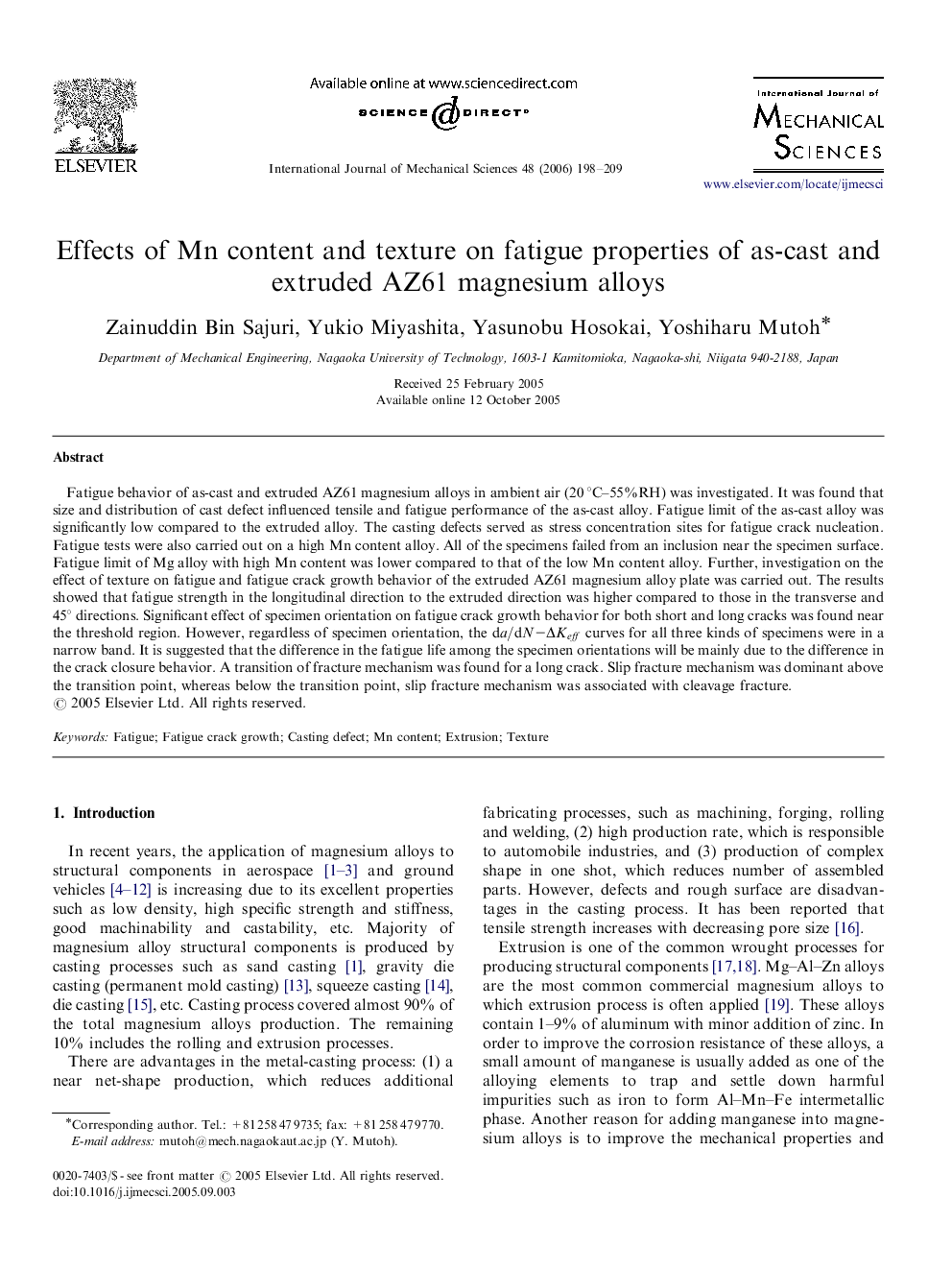| Article ID | Journal | Published Year | Pages | File Type |
|---|---|---|---|---|
| 784261 | International Journal of Mechanical Sciences | 2006 | 12 Pages |
Fatigue behavior of as-cast and extruded AZ61 magnesium alloys in ambient air (20 °C–55%RH) was investigated. It was found that size and distribution of cast defect influenced tensile and fatigue performance of the as-cast alloy. Fatigue limit of the as-cast alloy was significantly low compared to the extruded alloy. The casting defects served as stress concentration sites for fatigue crack nucleation. Fatigue tests were also carried out on a high Mn content alloy. All of the specimens failed from an inclusion near the specimen surface. Fatigue limit of Mg alloy with high Mn content was lower compared to that of the low Mn content alloy. Further, investigation on the effect of texture on fatigue and fatigue crack growth behavior of the extruded AZ61 magnesium alloy plate was carried out. The results showed that fatigue strength in the longitudinal direction to the extruded direction was higher compared to those in the transverse and 45° directions. Significant effect of specimen orientation on fatigue crack growth behavior for both short and long cracks was found near the threshold region. However, regardless of specimen orientation, the da/dN–ΔKeffda/dN–ΔKeff curves for all three kinds of specimens were in a narrow band. It is suggested that the difference in the fatigue life among the specimen orientations will be mainly due to the difference in the crack closure behavior. A transition of fracture mechanism was found for a long crack. Slip fracture mechanism was dominant above the transition point, whereas below the transition point, slip fracture mechanism was associated with cleavage fracture.
